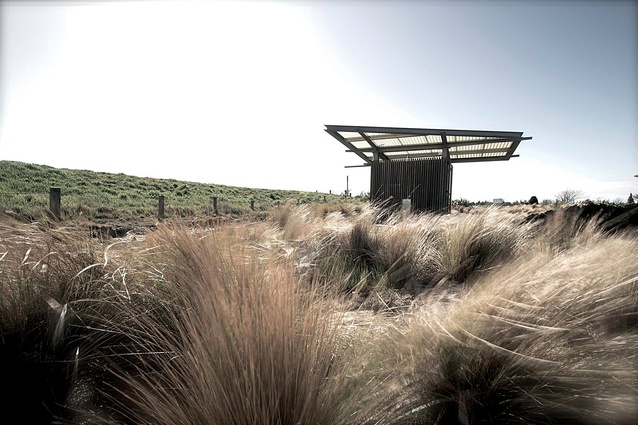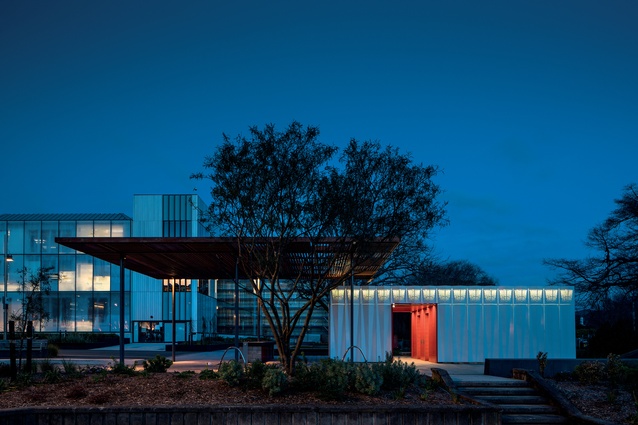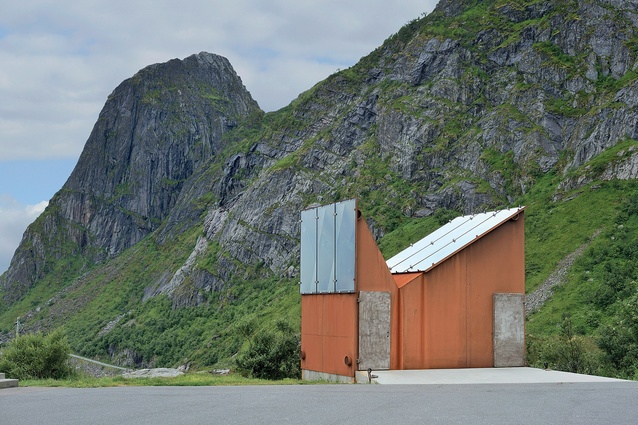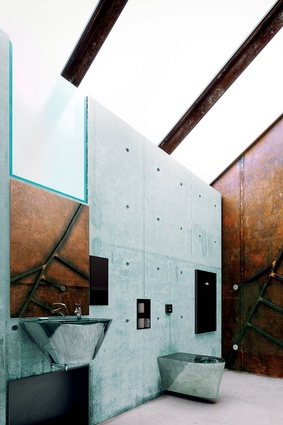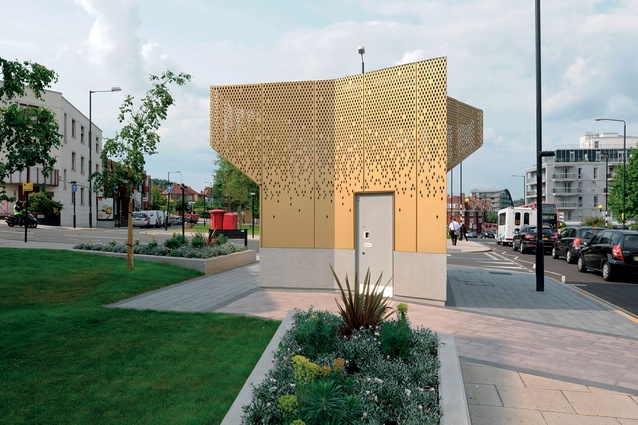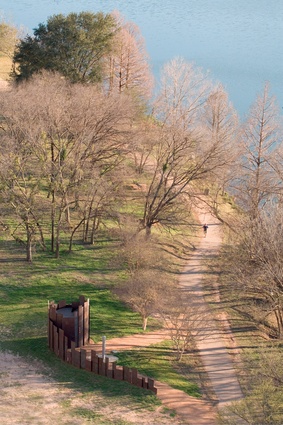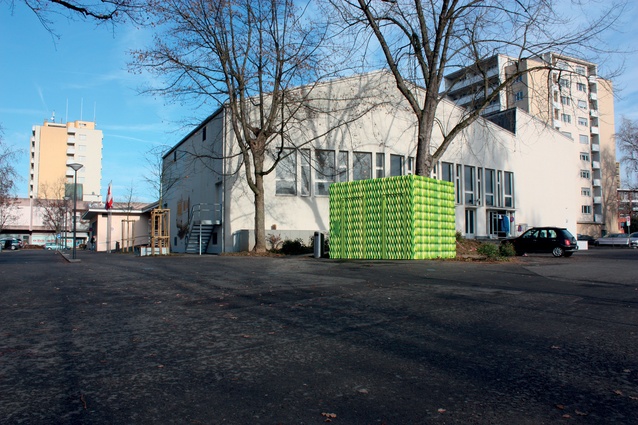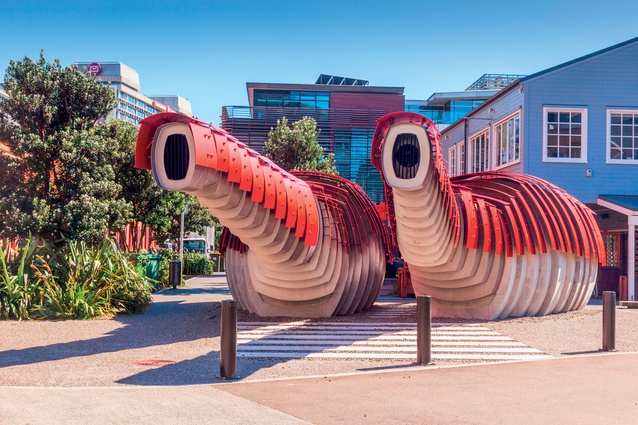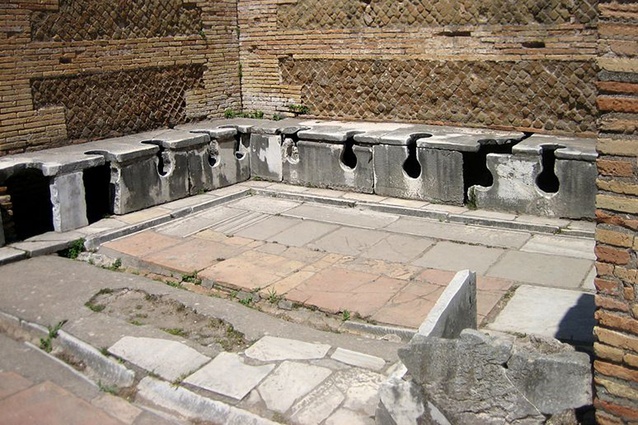Game of Thrones
Natalie Bradburn writes about the design of public spaces for private performances and why we need more public loos.
Parting with our bodily waste is a ritual that binds us all as living, breathing humans, participating in the extraordinary process of digestion and elimination. But, oh, how repulsive! How smelly and sinister! How crude and unsightly, is such an act! Food, which first we devoured with such sensual delight, is now at the end of its days. After a journey through the dark passages of our bodies, mortified by acids and bodily fluids, it prepares to depart, then exits in an unceremonious act.
It is no longer wanted and no longer needed, and, in fact, we can no longer talk about it because, as author and academic Alexander Kira confirms in his book, The Bathroom, “urine and faeces are the most repulsive and worthless substances imaginable”. Yet, however unappealing bodily waste may be, disposing of it is inherent to our living and, as a consequence, facilities are needed to provide relief.
While in the comfort and privacy of your own home, the decision of where to go might not seem so distressing, but what happens when you’re at the beach with friends or in town doing the grocery shopping? Perhaps more daunting still: you need to go with a pram and toddler in tow while out running errands. Whatever the case may be, there are some times when you just have to find the nearest toilet asap, before you lose your dignity along with your new woollen trousers.

So, where do you go? The answer is none other than your under-appreciated public toilet, which has saved bladders and embarrassing moments, and kept shit off the street since anyone who is reading this has been alive. Currently, public toilets have a reputation for being places with wet, dirty floors, pee on the seats and unflushed bowls of previous tenants’ belongings.
Such a place can be used as a familiar stop in between long car rides in the summer, as a place to pick up a date (or maybe a disease) and even as a swimsuit changing room for when a towel held up by your mum just won’t do. But, the public toilet hasn’t always been this suave. With a long history that pre-dates bathers and family car trips down the coast; you might say that it was the Romans who invented it first.
Some of the oldest recorded public toilets and sanitary spaces are those found in ancient Rome. Toilets for Romans meant multi-seated arrangements, known as forica, and were found in public places, such as theatres and baths. This style of lavatory was the most common provision and often catered for up to 20 seats.
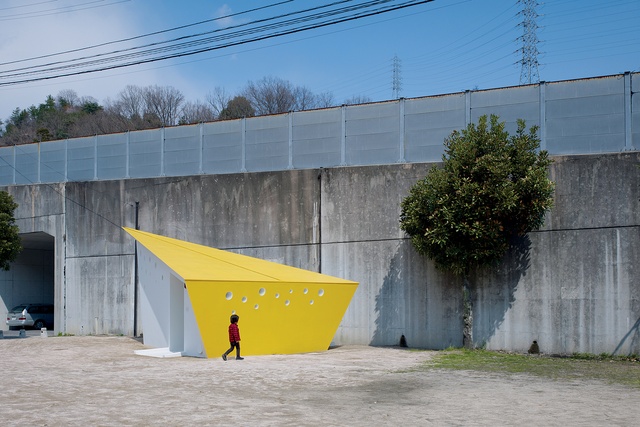
The nature of the communal toilet inspired conversation because, depending on your gluteal circumference, there might be only a few inches between you and your partner. Using the toilet was a public event and was even employed for gaining an invitation to dinner, perhaps, by meeting someone of social importance or wealth.
It makes ‘going to the loo’ in New Zealand seem like quite a solitary affair. While the Roman arrangement induced a proximity of bodies, it also advocated for eye contact by aligning participants sight in a semicircular format to encourage engagement with others. You only have to look at a public facility with multiple units today to note how partitioning defers both visual and verbal contact – and thank goodness for that, I hear most of you muttering.
This new relationship and arrangement of public facilities today can be credited (or blamed) to a greater awareness of health and bodily contamination. Disease was more prevalent and uncontrollable in Roman times, as the connection between bad bacteria and ill health hadn’t yet been realised. And, yes, thank goodness we cottoned on to that one. Yet, I can’t help but wonder if something was lost along the way.
When compared to the facilities and conventions that are assumed in current New Zealand standards, the experience and relationship with dirt and defecation is remarkably different. Although New Zealand had a relatively typical colonial start to dealing with waste, disease and ‘night carts’ included, the current provisions ensure that unwanted bodily waste is disposed of through unseen and unheard piped networks.
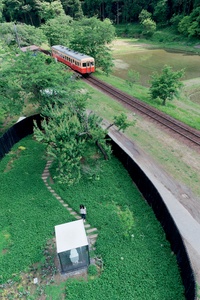
This ensures a sensory detachment that allows the placement of facilities in close proximity to other activities. These new (well, they would probably be considered old news now) plumbing innovations have allowed for a number of notable architectural contributions across the globe.
From the outside of Sou Fujimoto Architect’s public toilet in Ichihara, all you see is a 2m-high black fence. The entrance at the periphery opens up into a luscious garden setting, leading you to a transparent glass box placed in the centre of the 200m2 oval. The box encases a regular white toilet and basin combination, and the occupant is offered a 360-degree view of the surrounding enclosure.
While outhouses in the bush might not seem irregular to a New Zealander, this scene offers an interesting take on privacy and the use of a water-flush toilet in an outdoor setting. Opposing the long-drop association – and threat of a decaying rat thrusting itself at you as you open the lid – this clean and peculiar layout looks as though it’s been carved out of a three-bedroomed home with mod cons. It defies the camping experience by offering the comfort of cleanliness and the familiarity of running water.
It would definitely be worth a look if you were in the area but, because it’s now quite an attraction, you might find yourself waiting in a long queue. Although, I wouldn’t worry too much, they have rather ironically installed a portaloo nearby for those who have come for more than a view.
Another example of a toilet with exceptional surrounds is Manthey Kula’s Roadside Reststop in Moskenes, Norway. Composed of structural Corten steel, this elegant number isn’t going anywhere. Designed to withstand very extreme weather conditions, the two-cubical facility proves to be a true delight for those lucky enough to find it.

No surprise then that it’s not Kula’s only public toilet because there’s a second facility built for the same client. While the other, Skreda Roadside Restroom, doesn’t offer the same charm as does its sister, its low-cost construction and cliff-edge location give the toilet some architectural street cred.
Another architecture practice that has clocked up more than a few rest rooms is Japanese firm Shuhei Endo. Its projects are fascinating in both their designs and their programming. The most recent contribution, Gravitecture M, combines a rest room with a ticket booth for a tennis court. Located in Miki-city, Hyogo Prefecture, in Japan, the well-portioned interior streams light through a delicately raised and detached roof. The use of dark and hardy materials offers a delightful retreat from the exposed surroundings.
Another one of Endo’s rest room projects combines a café and a rest room in Halftecture OR. The two programmes are separated by a wide middle seam and an internal circular opening in the roof. This gracefully allows you to avoid the awkward occasion of having to ask the waitress if you can take a piss in their bathroom, and “no, I don’t want to buy a muffin”.
The merging of two programmes offers a solution to some of the ongoing problems associated with public toilets, including the cost of maintenance and general safety of participants. If there are people who work nearby, the toilet doesn’t seem to be in such an isolated location and a passive surveying of the site is ensured. That’s not to say that the workers will be able to talk to you through a shared mesh wall while your ankles are wrapped in your finest beige knickers but, public toilets can become very unsettling, especially when it’s dark and there is no one else around.

It also means that, if the toilets need more loo paper, there is no need for a full-time cleaner or a full-time dirty floor. It would result in cleaner, safer spaces, which are cheaper to run in the long term. These mixed-use spaces could be subsidised by local authorities and could prove to be lucrative and productive for small businesses to operate within the city.
You would also think that, as our cities expand and populations all over the world grow, there would be an increase in the number of public toilets. Yet, somehow, it seems to be working in reverse. The bigger the city, the fewer toilets there are; just try to find one in New York without downloading an app. Cities have become increasingly dependent on private businesses to become public janitors. Starbucks in New York made headlines with the closure of its toilets a couple of years ago as it couldn’t keep up with the public need.
Back in New Zealand, Auckland Council has recently leased out five public toilets in the inner city in the hope that this will “rejuvenate these city locations, restore and celebrate heritage buildings, and generate a rental income for Auckland Council”. While several of the toilets have been closed for many years, and have poor access for wheelchairs and young children, one of them located in Kingsland still serves punters after rugby matches. Where will their urine go now? I hate to think. It’s understandable that public toilets require a little attention to clean and maintain but, surely, that’s no excuse to remove them from the city.
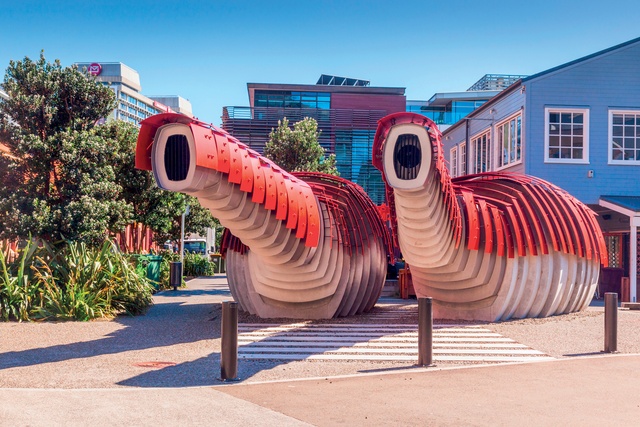
It’s not only the expense that keeps toilets off the streets but they combine very private acts with very public locations; this is a somewhat rare facility for the Council to offer. People who might use them often feel vulnerable and avoid them at all costs. What if someone hears me? What if there is no toilet paper? What if the door mysteriously opens by itself and the paparazzi are waiting outside?
Combine these concerns with their reputation for being unsafe places at night, even during the day in some cases, and you have yourself a recipe for mischief. However, despite public facilities being generally down on numbers, and not always the most comfortable places, there are a few local exceptional projects that offer not only a service but a delightful experience.
Some of the most well-known toilets across the country would have to be in Kawakawa: Friedensreich Hundertwasser’s public toilets. They were built in 1998 and the small northern town claims that they are the world’s finest! Comprising colour, mosaics and glass bottles, the work is typical of Hundertwasser and is an absolute pleasure to visit. The green roof and bizarrely large tree on top go against every grain of the silver, self-cleaning spaceships that are disguising themselves as public toilets throughout the larger cities.
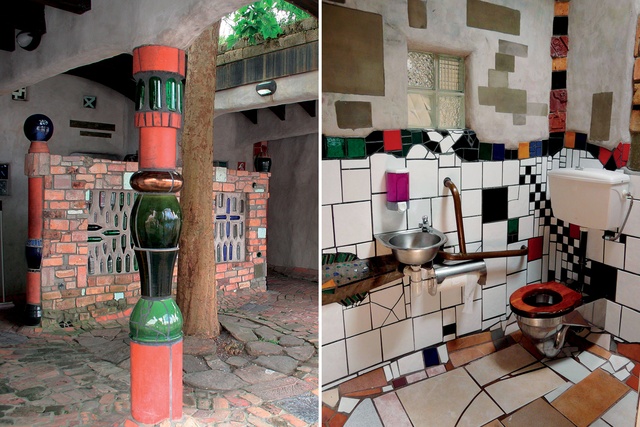
The building has also provided Kawakawa with more tourism than its apple cream doughnuts were ever going to. I still stop in every time I pass, not only because of the softly illuminated interior and the clever, handcrafted tiling but, as with most good public toilets, their locations are well timed.
In Wellington, Studio Pacific Architecture’s wonderfully amusing public toilets, Kumutoto, near the waterfront, looks as though they landed out of a contemporary prehistoric novel. Two sea-urchin creatures extrude their necks out into Synergy Plaza, each adorned with a black eye and a silver belly. The interior, while, unfortunately, it doesn’t offer the periscope outlook you think it might from the exterior, it has a well designed and thoughtful layout. With plenty of room to place your bag, coat or pram, it seems to exceed the standard size and you truly feel as though you are in the belly of a large whale – which is a much more pleasant feeling that you might think.
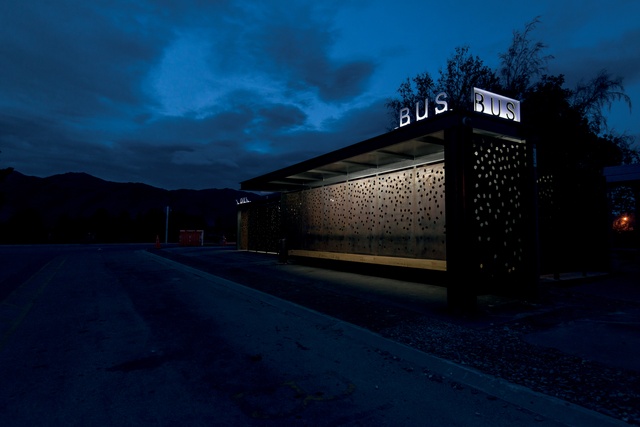
In 2010, Mary Jowett Architects combined a public toilet and bus shelter in Frankton, Queenstown: an appropriate pair and a well placed one at that. Potentially, this coupling could set a standard and not only suit the picturesque setting in which this facility is found but propose that toilets could clip on to bus stops in the city and surrounding suburbs more often. It would certainly fill in the few minutes you have to wait for the next bus and help to avoid any uncomfortable bumpy rides home with a full bladder.
So what does this mean for the public toilets of the future? Apart from there needing to be more of them and not less, despite the current trend, consideration needs to be taken regarding the way in which we can integrate them into the city without making them unsafe, isolated places. Plumbing systems allow for the proximity of other spaces and this should be applied not only to domestic spaces but to public ones too. Some of the examples of mixed-use facilities above are just the beginning of the possibilities.
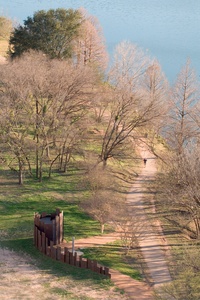
There is also a huge improvement needed for minority groups. Mothers with prams, who need to change nappies, find the problem of where to go much more difficult. It’s true that large facilities often offer parenting rooms, with change stands and seats – but what happens when there isn’t one available where you are? Are you supposed to hold the baby mid-air, Simba-style, whilst trying to reach for the loo paper?
What about those who identify as transgender or gender-neutral? Current public toilets in New Zealand are also difficult spaces for those who are used to squatting rather than sitting: a much healthier way to defecate than is our usual throne-like stance and much more common in countries other than ours.
There needs to be a more thorough investigation into how public toilets can operate within the city to serve the diverse needs of those who use them. It’s time their reputation as unsafe, unclean places is rectified and it’s time to accept that using a toilet is a human function that isn’t going away so we should start designing more of them, more often.


